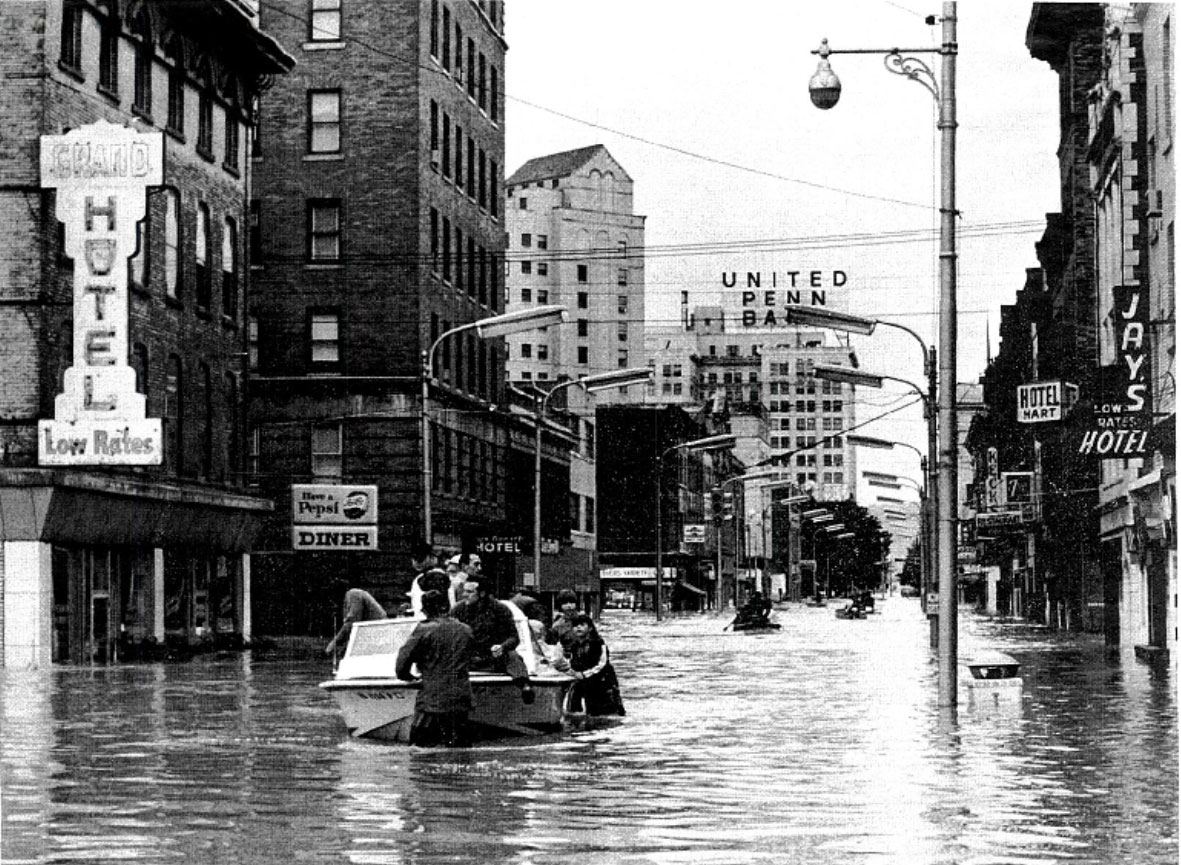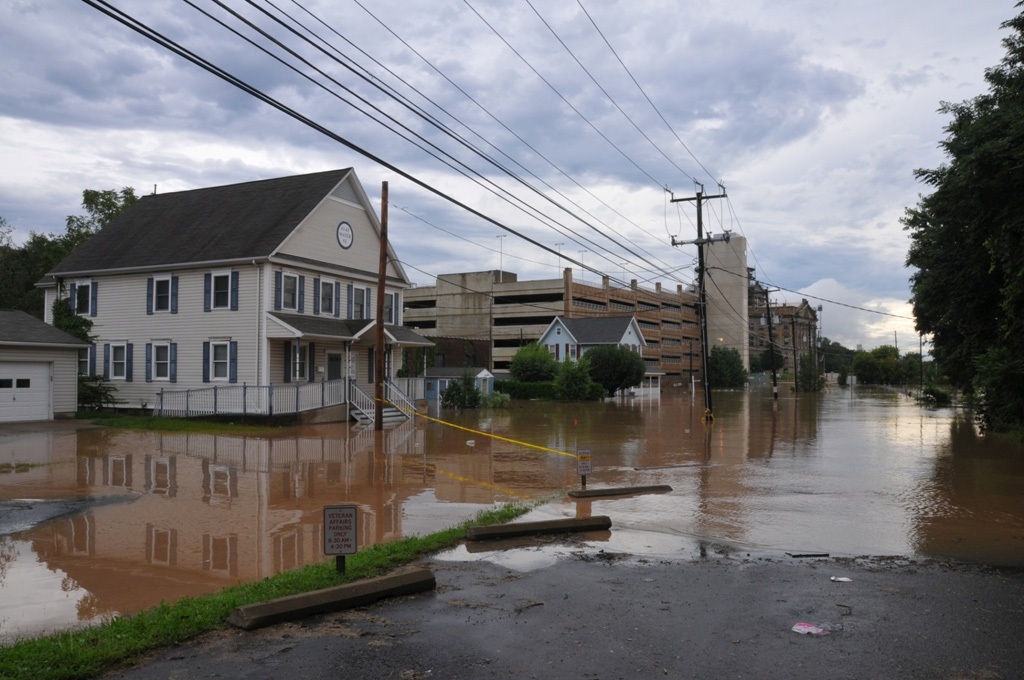In March of 1935, the U.S. Army Corps of Engineers was allocated $3.65 million to build a levee system along the Susquehanna River in Luzerne County. The levee system was designed to protect up to 33 feet, work began on Dec. 2, 1935, and the project was expected to be finished by Nov. 15, 1936. Before the project was finished, the Susquehanna crested at 28.6 feet. A spring thaw and bouts of heavy rain affected the Kingston area, damaging 1,600 homes. On Friday, March 20, the river crested again hitting the eighth highest record of 33.07 feet. The flooding impacted Kingston and Plymouth causing massive damage to homes and businesses.
Nanticoke was inundated and West Pittston experienced damaging flood waters. In Pennsylvania, the 1936 flood caused $212 million in damage. In the Wyoming Valley, there was $9 million in damage with 3,800 homes and 15,000 residents affected in Wilkes-Barre and another 5,600 homes and 25,600 residents affected in other river-side towns. After the flood, a strong effort went into constructing the levee. The Sunday Independent reported on June, 21, 1936, that the river control project “ is the largest under way in this section now and is unequalled by anything in the state.” According to the same article by the Independent, “More than 1,600 men and 200 pieces of machinery are employed on this project in building the 6,400- foot long (levee) at a cost of $793,000.” On June 22 1936, Roosevelt signed the National Flood Control Act into law, making flood control a federal policy and authorizing $27 million for New York and Pennsylvania. The Act also officially appointed the U.S. Army Corps of Engineers as the chief federal agency in charge of the flood control project. The levee construction phase began in Plymouth in 1940 and continued on in Swoyersville-Forty-Fort in 1953. (excerpts from Citizens Voice, March 20, 2016)














